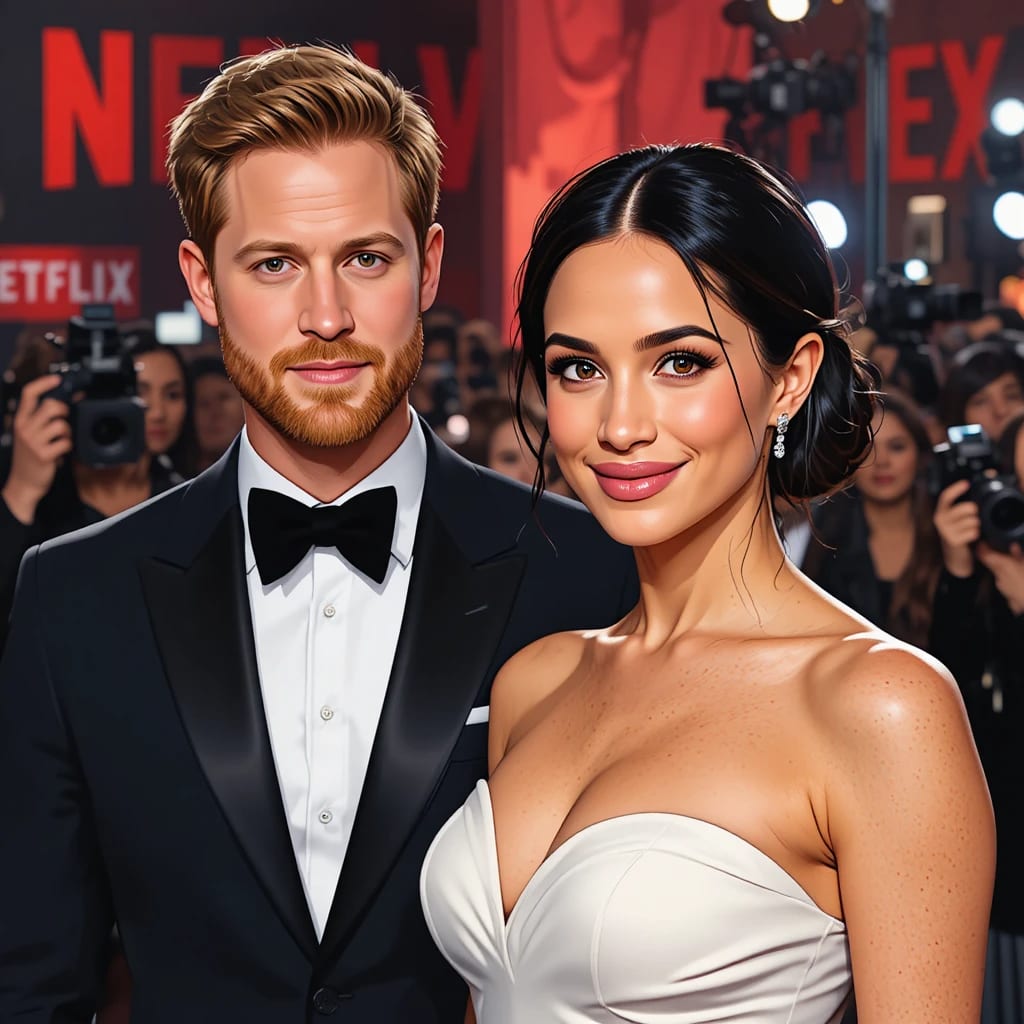Meghan Markle’s story was once painted as a modern fairy tale. An American actress who became a duchess, she captured headlines across the world and shook the traditions of the British monarchy. But in California, her life has taken on a different rhythm—less about tiaras and palaces, and more about navigating the sharp corners of Hollywood.
At the center of this new chapter is Netflix. When Meghan and Prince Harry signed their multimillion-dollar deal with the streaming giant, it was described as the beginning of a new era. They would have creative freedom, global reach, and the chance to tell stories on their own terms. Ted Sarandos, Netflix’s co-CEO, became a crucial figure in their new life. For Harry, it was a way to control their narrative outside royal walls. For Meghan, it was another stage—one that promised both visibility and influence.
Yet, the deal has not unfolded as expected. Their projects drew attention, but few became cultural phenomena. The couple’s grand ambitions of building a media empire seemed harder to achieve than anticipated. And so, whispers began to grow.
Insiders claim Meghan has been working diligently to stay close to Sarandos. She is seen at his events, photographed nearby at industry gatherings, and often quick to praise him publicly. To some observers, this is simply smart networking—exactly what anyone in her position would do. But others interpret it as something more calculated, as though Meghan is fighting to keep herself at the center of Netflix’s world even as the spotlight drifts elsewhere.
What makes the story so combustible is not necessarily the facts, but the optics. Meghan is one of the most discussed women in the world. Every gesture, every smile, every shared stage with Sarandos is magnified under the tabloids’ lens. In Hollywood, networking is natural. But for Meghan, networking becomes a narrative. The duchess who once challenged the royal family is now portrayed as maneuvering for influence in Hollywood’s power circles.
For Harry, the contrast could not be sharper. The man once celebrated as the rebel prince now appears uneasy in the very world his wife thrives in. Paparazzi capture him standing slightly apart at events, less comfortable under the glare of Hollywood flashbulbs. Supporters describe him as loyal and devoted, but loyalty is not as visible on camera as Meghan’s polished confidence. The images tell a story of imbalance—Meghan as the strategist, Harry as the accessory.
That imbalance has become a theme in commentary. Critics argue this is the same pattern Meghan has followed throughout her life: seizing opportunities, reinventing herself, and aligning with powerful figures who can help her climb higher. The palace once served that purpose. Now, the whispers suggest, Netflix does.
But others defend her. They say Meghan is judged far more harshly than her male peers. A man attending events and building relationships would be described as ambitious and professional. A woman doing the same is accused of scheming. To these defenders, the scrutiny Meghan faces is another example of double standards in both the press and society.
Still, gossip doesn’t wait for balance. Every image of Meghan near Sarandos sparks speculation. Every appearance without Harry by her side raises questions. Whether true or not, the perception grows. And in Hollywood, perception can shape reality.
The irony is striking. Meghan and Harry left the monarchy in search of privacy and freedom. Yet in Los Angeles, the spotlight burns even brighter. The scrutiny they tried to escape has followed them, only now with a Hollywood twist. Instead of palace aides whispering in corridors, it is paparazzi lenses and entertainment blogs framing their lives as a never-ending drama.
The consequences extend beyond personal reputation. Netflix itself faces a calculation. Meghan’s name guarantees attention, but it also carries risk. Executives know that stories of ambition and networking can be spun into narratives of manipulation. If the noise becomes too loud, the company may have to reconsider how closely it ties itself to her public image.
For Meghan, that would be a blow. In Hollywood, access is power. Being seen near Sarandos signals relevance. Losing that proximity could weaken her ability to shape her own narrative.
Harry, meanwhile, is left in a difficult position. He gave up his royal duties, his military identity, and his family ties for freedom. But in this new world, his role is unclear. Meghan seems to move with confidence, instinctively knowing how to command attention. Harry looks unsettled, a man who once knew his place within tradition but now struggles to define himself outside of it.
In the end, Meghan’s trajectory reflects a pattern of relentless reinvention. She has never stopped climbing. From actress to duchess, from duchess to media figure, each stage has been leveraged for the next. Hollywood is not unfamiliar to her—it is home territory. And she plays its game with determination.
The question is not whether Meghan will continue to pursue influence. That much seems certain. The real question is whether Harry can keep pace, or whether he will remain a supporting character in a story increasingly written on Meghan’s terms.
In Hollywood, relevance is everything. And Meghan Markle has shown she will do whatever it takes to stay in the frame.
